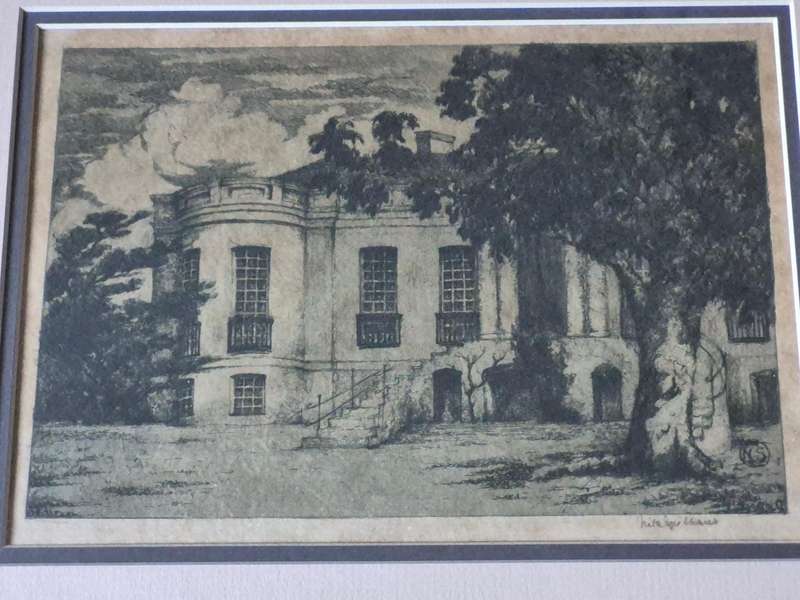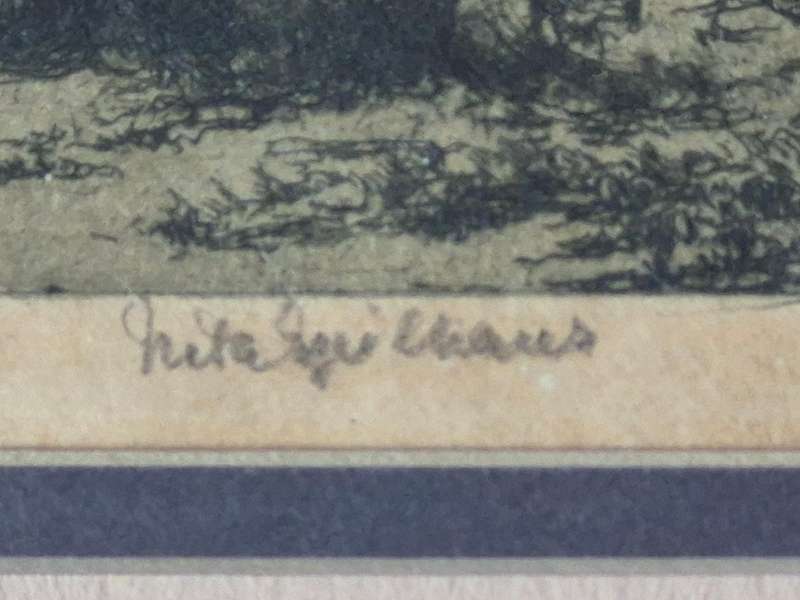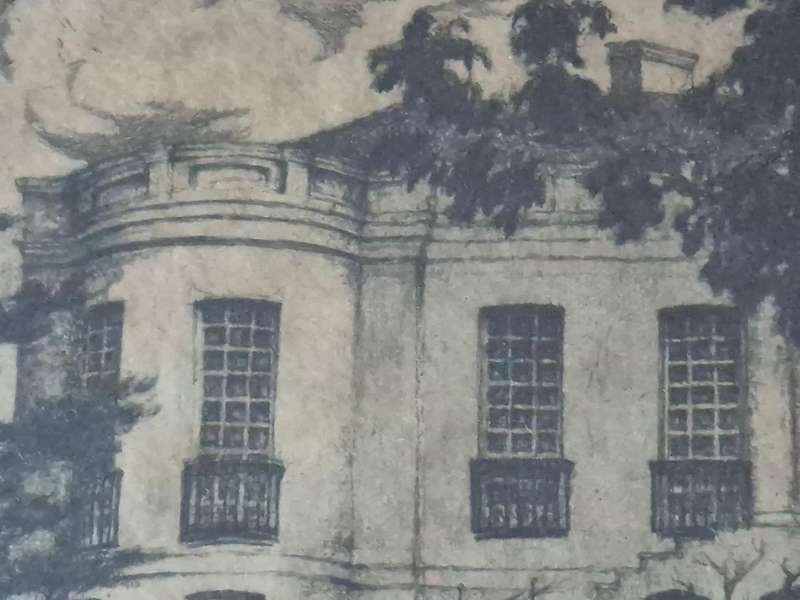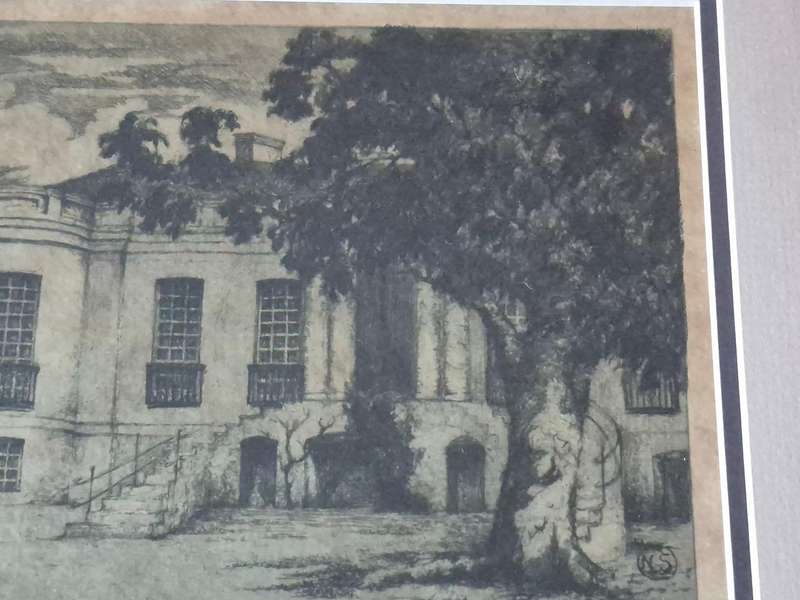










Nita Spilhaus. RARE Hand signed etching of the 1825 Worcester Drostdy with Trees. Framed by Infinart
Check my rate
| Main centres: | 1-3 business days |
| Regional areas: | 3-4 business days |
| Remote areas: | 3-5 business days |











| Main centres: | 1-3 business days |
| Regional areas: | 3-4 business days |
| Remote areas: | 3-5 business days |
Hand signed bottom right by Nita Spilhaus (1878-1967). Etched in the 1920s this image of a beautiful old Cape Georgian building with trees is a wonderful evocation of the old Cape.
The Drostdy building was commenced in 1823 and completed in 1825 on instruction of Lord Charles Somerset, when the magisterial seat was moved from Tulbagh to Worcester. It served as a magistrates office until 1893, and then as the magistrate's house until 1902. In 1903 it became a school for returning Boer soldiers after the Boer War. Then in 1944 it became a Technical High School which it is to this day! The Drostdy Technical High School is situated at 40 Somerset Street, Langerug, Worcester, and integrates the old Drostdy into its campus. The building is very well maintained and keeps its original appearance.
The image is 22 cm x 16 cm and is in very good condition. The gilt frame is 39 cm x 34 cm and is also in very good condition.
Framed by Infinart, the best framers in Cape Town. Ready to hang on your wall.
German/South African 1878-1967 . Nita Spilhaus was born in Portugal to a Portuguese mother and German father and was raised by her grandfather in Lübeck, Germany after her both her parents died in her infancy. She trained as an artist at the Lübeck School of Art, then at a private art school run by German painter Friedrich Fehr in Munich, and then at an artists colony in Dachau, outside of Munich. Spilhaus relocated to South Africa in 1908, following her brother and uncle who had already established themselves in the Cape. Here she gradually integrated into the artistic community, joining the South African Society of Artists soon after her arrival and befriending artists like Florence Zerffi, Edward Roworth, Moses Kottler, Allerly Glossop, Pieter Wenning, Ruth Prowse, and Hugo Naudé. Spilhaus was most prolific between the time she arrived in the Cape and the early 1920s as she was working and exhibiting with these artists. In 1921, she married Ernst Simon and from 1925 to 1938 the couple lived in Munich, returning to the Cape just before the outbreak of World War II. Spilhaus slowly began to lose her eyesight in the 1950s, which left her unable to continue her art. She is well known for her landscape works and her affinity for trees and the Cape mountains.





